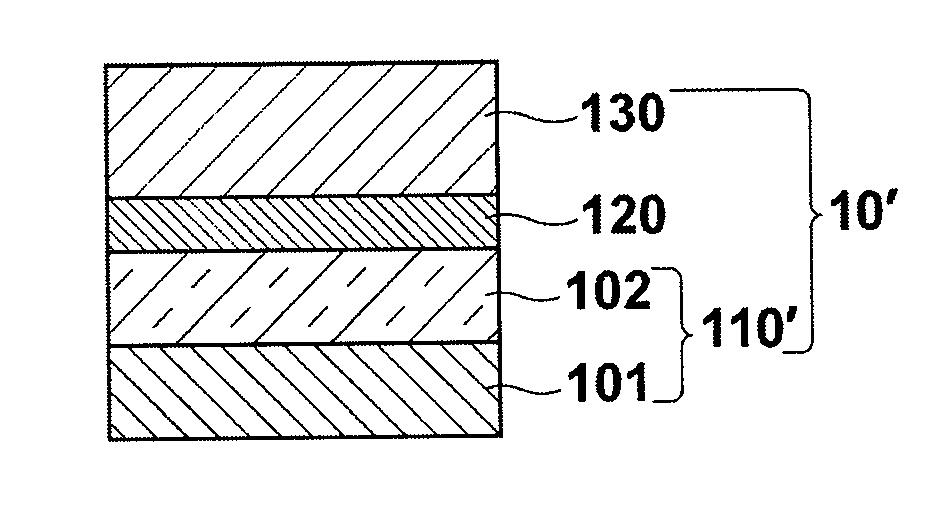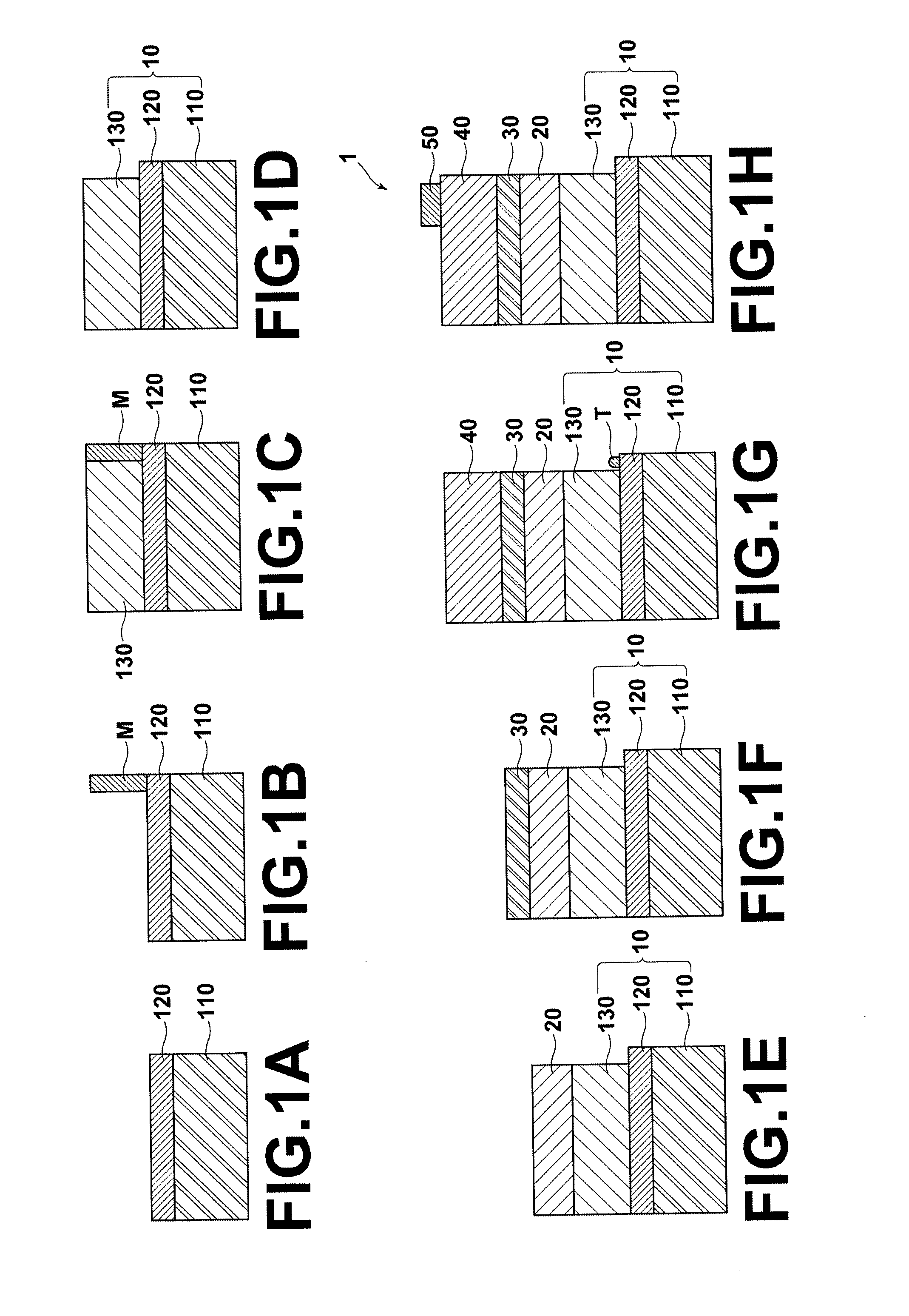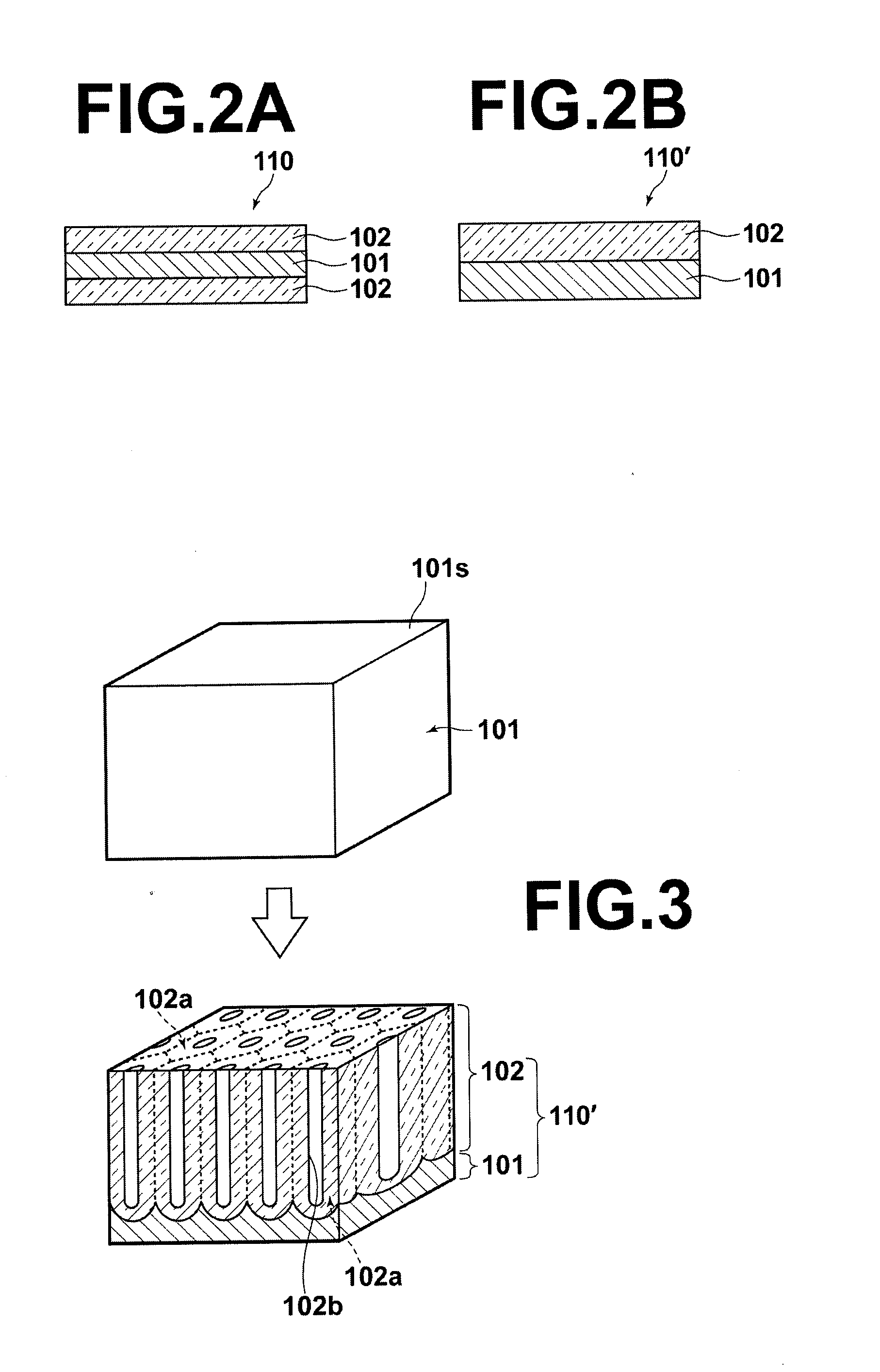Process for producing photoelectric conversion devices
- Summary
- Abstract
- Description
- Claims
- Application Information
AI Technical Summary
Benefits of technology
Problems solved by technology
Method used
Image
Examples
examples
[0173]The present invention will further be illustrated by the following non-limitative examples.
examples 1 to 4
, Comparative Examples 1 to 3
[0174]In Examples 1 to 4 and Comparative Examples 1 to 3, photoelectric conversion devices were prepared by combining the layered substrates and the film forming techniques for the respective layers as described below. Table 1 shows the layer constitution, the combination of the film forming techniques for the respective layers, and the evaluation results in each of Examples 1 to 4 and Comparative Examples 1 to 3.
[0175]As the layered substrates, a layered substrate 1 and a layered substrate 2 described below were prepared.
[0176]Layered substrate 1: The layered substrate 1 comprised a soda-lime glass (SLG) substrate provided with an Mo electrode layer, and a CIGS layer formed on the Mo electrode layer of the soda-lime glass (SLG) substrate. The layered substrate 1 was prepared in the manner described below.
[0177]The Mo bottom electrode layer having a thickness of 0.8 μm was formed with the sputtering technique on the soda-lime glass (SLG) substrate. A mas...
PUM
 Login to View More
Login to View More Abstract
Description
Claims
Application Information
 Login to View More
Login to View More - R&D
- Intellectual Property
- Life Sciences
- Materials
- Tech Scout
- Unparalleled Data Quality
- Higher Quality Content
- 60% Fewer Hallucinations
Browse by: Latest US Patents, China's latest patents, Technical Efficacy Thesaurus, Application Domain, Technology Topic, Popular Technical Reports.
© 2025 PatSnap. All rights reserved.Legal|Privacy policy|Modern Slavery Act Transparency Statement|Sitemap|About US| Contact US: help@patsnap.com



